Imagine having 16,000 competitors. And that’s no joke — that’s how many food service establishments are registered in Lithuania. Even if you divide that number by 16, you’re still competing with 1,000 businesses — and that’s tough.
So why do some places have lines out the door, while others are forced to shut down in debt? Why do some easily grow their audience on social media, while others just burn through their budget? Why do some create menu hits, while others can’t get any new dish to take off?
Foundation
Opening a restaurant always comes with a lot of questions — from location to staffing. According to a survey by Restaurant365, recruitment and employee retention are major concerns for more than 32% of owners. And when you also have to think about suppliers and documentation, there’s little time left to build a brand.
A common scenario: you have a name and a logo — so that means you have a brand, right? Not quite. You can coast on that for a while, but eventually, problems start to surface. Staff turnover increases, and as 30% of restaurant owners admit, revenue begins to drop.
Usually the foundation in the restaurant business doesn’t look like this. Here’s how it should be structured in order of importance:
Location ➡️ Suppliers ➡️ Equipment ➡️ Technology ➡️ Staff ➡️ Marketing
One essential ingredient is missing — the brand. Take a look at how the foundation looks with it included:
✅ Brand-driven location
✅ Suppliers aligned with the brand
✅ Brand-integrated equipment
✅ Brand-enhancing technology
✅ Branded team culture
✅ Brand-focused marketing

In a brand-driven approach, the location is chosen to unlock the brand’s potential — not the other way around. It’s not about adapting the brand to the space later, but selecting a space that amplifies the brand from the start. The same goes for suppliers, technology, staff, marketing, and the entire concept of the establishment. Every element should align with and reinforce the brand. By the way, according to Restaurant Brand Builder, venues that invest in branding generate 23% more revenue.
Functional and emotional components
All aspects of a restaurant can be roughly divided into functional and emotional elements.
Functional elements are perceived by customers as a given.
- Furniture provides guest comfort.
- The menu allows guests to explore the range of dishes.
- Navigation elements are also functional, although they can be part of the brand identity and convey emotion.
However, this is the bare minimum that visitors naturally expect. You won’t stand out among thousands of competitors by relying solely on functional components.
According to Michelin-starred chef Paul Liebrandt, people won’t remember the food — they’ll remember the emotions they felt in your restaurant, and the people who served them.
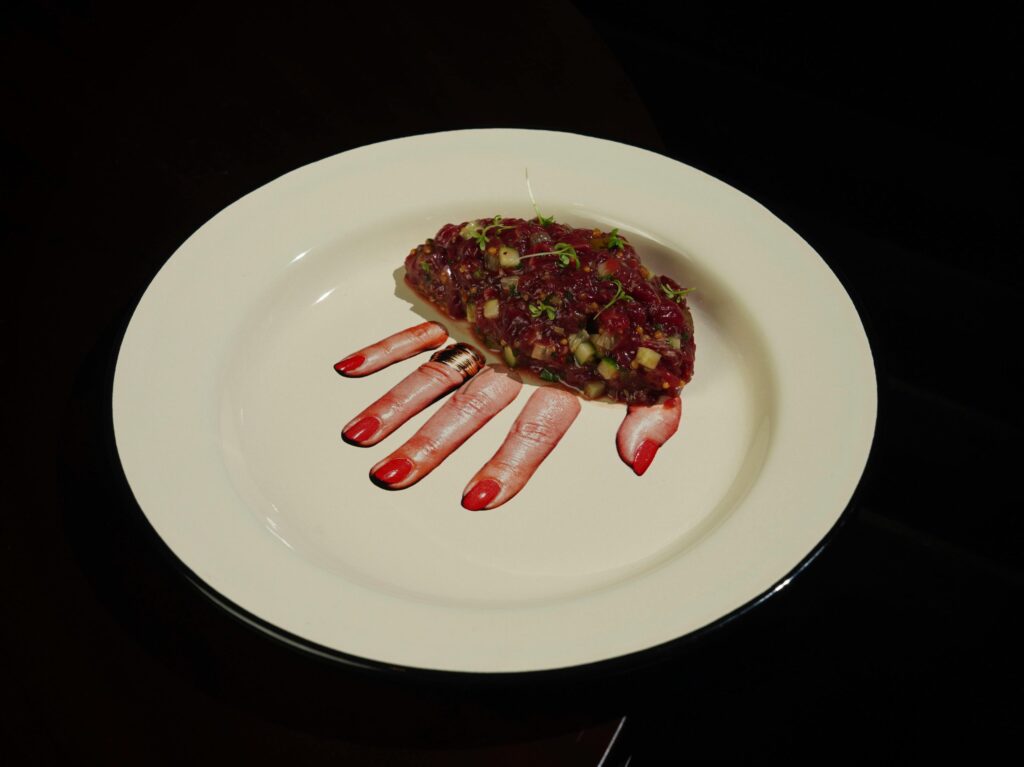

In his book The Big Miss: How Organizations Overlook the Value of Emotions, Zecho Dobrev emphasizes that emotional connection is what creates competitive advantage and drives customer loyalty.
A survey of 19,000 customers in the US and UK confirmed this: emotional attachment is the most important value factor, accounting for roughly 43% of a business’s worth.
It’s also important to consider generational preferences. According to a 2023 study by SquareSpace and YouGov (USA), 62% of Millennials and Gen Z say that the atmosphere and aesthetics of a place influence their choice more than the menu itself.
That’s why in today’s restaurant business, emotional experience has become a key competitive advantage. It’s not just background music or stylish décor — it’s a deliberately crafted system, known as branding, where every element works to evoke emotions and build customer loyalty.
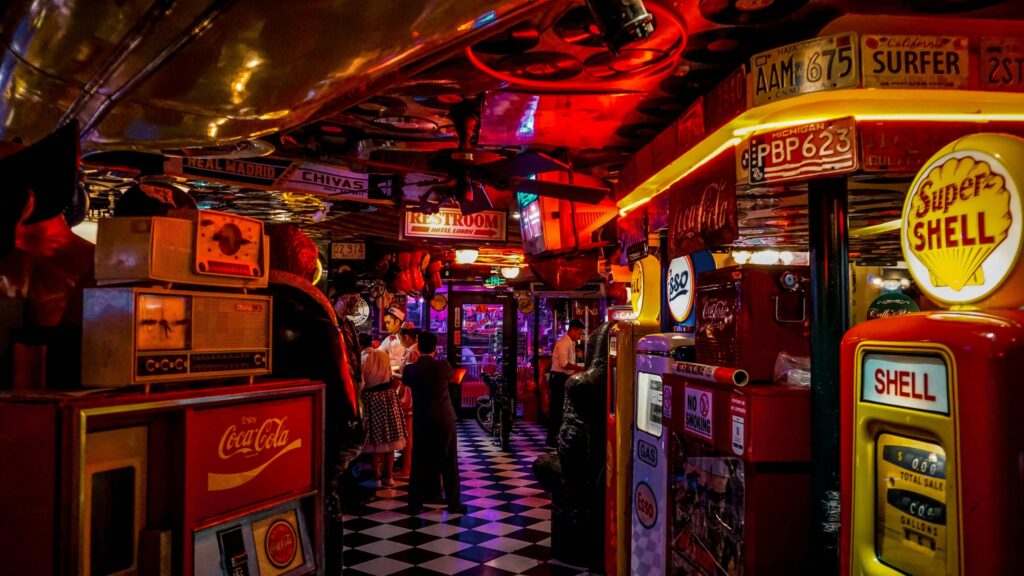
So what emotional elements will set you apart from the competition?
- Atmosphere
- Service and food presentation
- Music
- Interior design and spatial aesthetics
All of these don’t appeal to logic — they speak to emotion. That’s what transforms a simple visit into a personal, emotional experience guests want to relive again and again.
Branding as the foundation of customer loyalty
In restaurants that rely solely on foot traffic, the menu is often eclectic, food quality can vary, and customers don’t always know what to expect.
Branded establishments, on the other hand, have a kind of immunity — a built-in standard of quality.
Examples:
- Starbucks: The taste of their coffee may sometimes be average, but customers already know exactly what to expect — in any country.
- Dodo Pizza: Their tech platform combined with strict brand control gives customers a high level of predictability.
Let’s look at a typical scenario that illustrates how branding shapes a customer’s perception of a venue.
Imagine walking into two different cafés.
In the first one, the interior is modern and cozy, pleasant live music is playing, a uniformed waiter greets you warmly, offers a menu designed around a unique concept, and asks about your preferences.
The second café looks completely different: the interior is unremarkable, there’s no connection between the visual style and the branding elements, and the staff wear jeans and interact with you in a neutral, impersonal way.
You might enjoy your time in both places. But now imagine something goes wrong — your dish takes too long or the waiter mixes up your order.
Here’s where the difference begins. The venue with a well-crafted brand has already earned your trust. The first impression, the atmosphere, the attention to detail — all of it creates an emotional buffer. You’re more likely to be forgiving and understanding. This is the effect of what’s known as “trust credit.”
A venue without a brand doesn’t get that privilege. If it hasn’t built an emotional connection in advance, any mistake is perceived more harshly, and the likelihood of a return visit drops sharply. There’s nothing for the customer to hold onto — no personality, no value, no style.
According to PwC, 80% of customers are willing to forgive a brand’s mistake if their previous experience was positive. And as reported in Deloitte CX Insights 2023, a negative experience in a non-branded venue leads to customer churn 2.5 times faster than in branded locations.
This clearly shows that predictability and emotional association aren’t just details — they’re a strategic advantage.
Brand-Appetite
One of the concepts developed by the branding agency Moloko is the term “brand appetite” — a combination of visual and emotional associations that spark the desire to visit a venue. When someone chooses a place not for a specific menu item, but because it simply “clicks” — that’s brand appetite in action.
Think about the last place you chose not because of food reviews, but because it instantly made an impression. What played a role? The interior, the style of communication, the presentation, the music, the visuals — all of it comes together into a complex of emotions and associations that make you want to return.
The brand story plays a central role in the overall strategy. Especially in a highly competitive environment, it’s not just a beautiful legend — it’s the foundation that builds loyalty and engagement. The story answers key questions: why does the venue exist, what does it believe in, and what unique value does it offer? At its core lie three pillars — mission, values, and unique selling proposition.
One inspiring example is the coffee shop Blue Bottle Coffee. Its founder, musician and coffee enthusiast James Freeman, started with a small roasting setup in a garage in Oakland. His simple idea — to serve only the freshest coffee, roasted no more than 48 hours prior — eventually grew into a large-scale project with a clear mission: to make perfect coffee accessible to everyone. The brand’s values — respect for the product, deep knowledge, and a personal approach — are reflected in everything: from the cup design to the tone of voice on social media. Even the smallest details speak the brand’s language, creating instant recognition and trust by default.
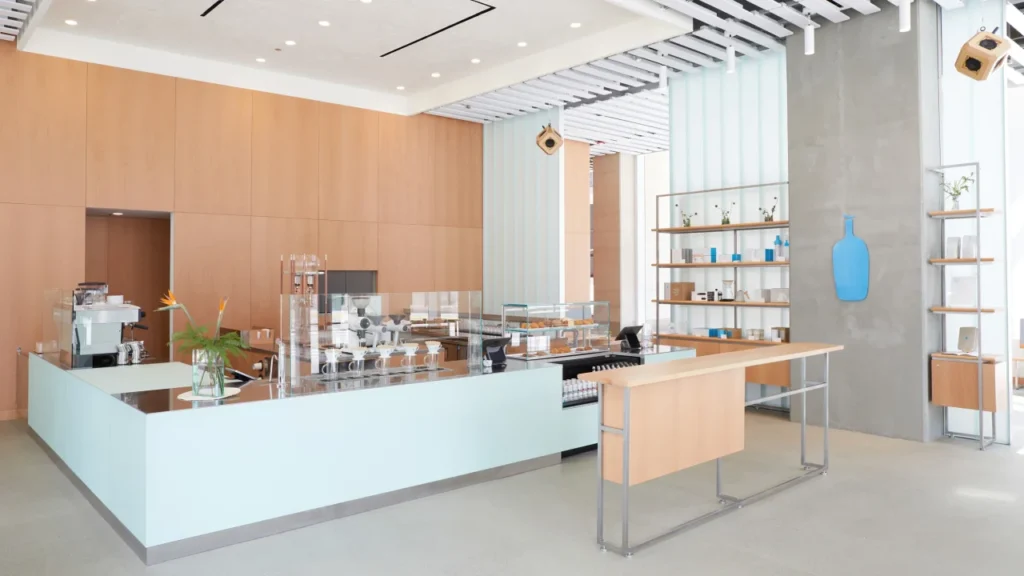
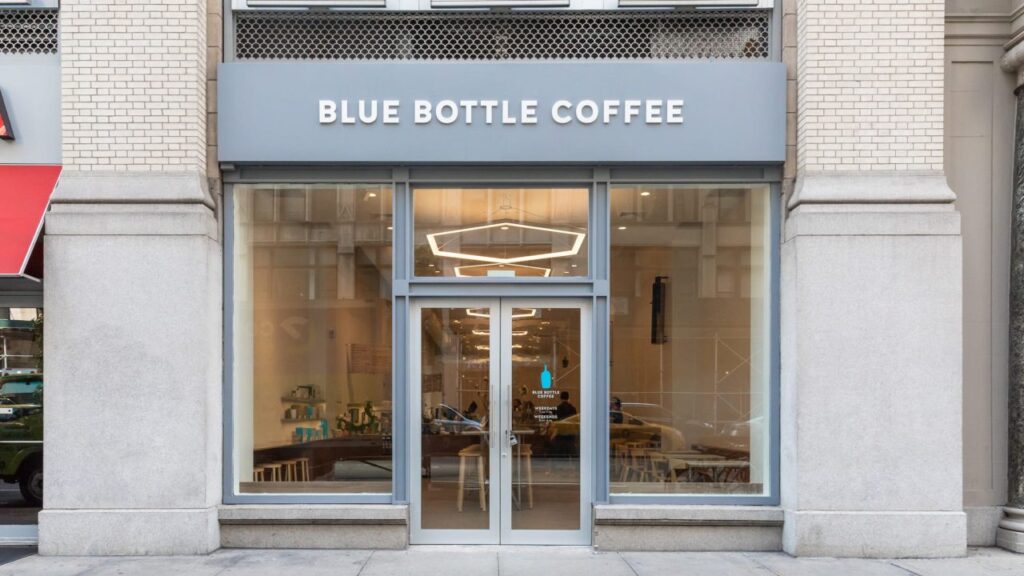
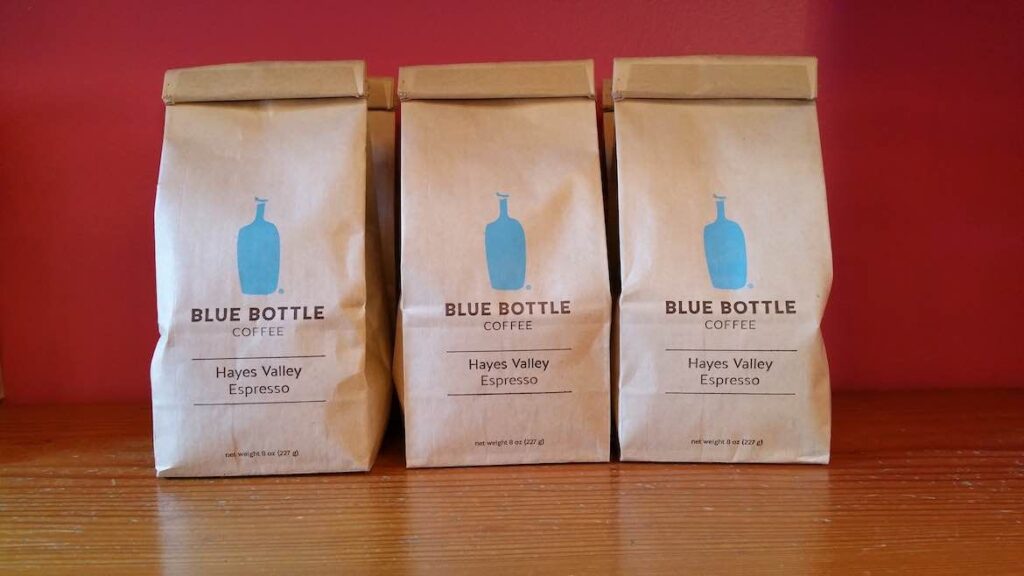
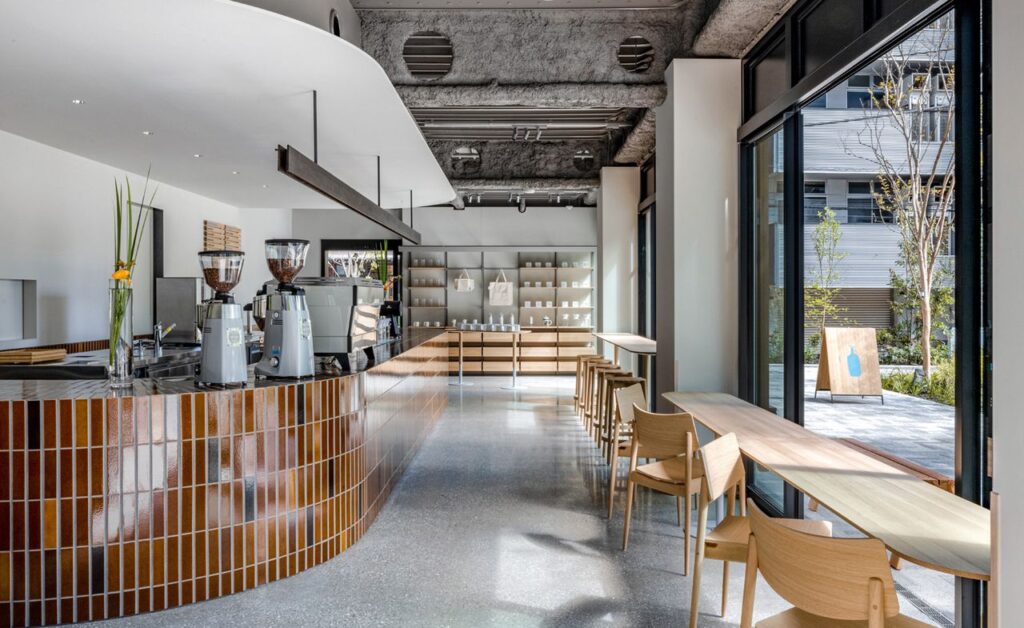
Branding in the restaurant business can be imagined as a carefully prepared dish, where every component plays its role — from core ingredients to spices and presentation. To build a successful brand image, three key elements matter most: visual identity, atmosphere, and service. Together, they create the first impression, define the character, and leave that emotional aftertaste guests want to experience again.
Visual identity is like the appearance of a dish served at the table. It shapes the first impression even before the guest places an order. The logo isn’t just a symbol — it’s the chef’s signature, reflecting attention to detail and the venue’s style. Color palette and typography are the spices that convey the mood, personality, and temperament of the space. Photographic style is the presentation — like a gourmet shoot — designed to spark appetite even while browsing social media or the website. Graphics are the garnish: visual elements that tie everything together into a cohesive brand image. And the tone of voice, the way the brand communicates with guests, is the emotional aftertaste that lingers after the visit. It shows up in everything — from menu descriptions to staff interactions and social media captions.
Let’s explore some examples from the food and beverage industry, including Moss, Louis Prima, Porsabor.
First example — Porsabor café in Tenerife. This is not just an ice cream outlet — it’s a premium space inspired by Italian gelato. The name Porsabor is a clever play on words, blending “Por favor” (please) and “Sabor” (taste), instantly setting the tone for emotional pleasure. Its logo, featuring exclamation marks, serves as a metaphor for flavor excitement. The color palette combines sun and chill — a symbolic contrast that reflects the sensation of enjoying ice cream on a hot island. Everything — from the display counter to the architectural integration into the urban landscape — communicates aesthetic delight. This has turned the café into a cult favorite among both locals and tourists.
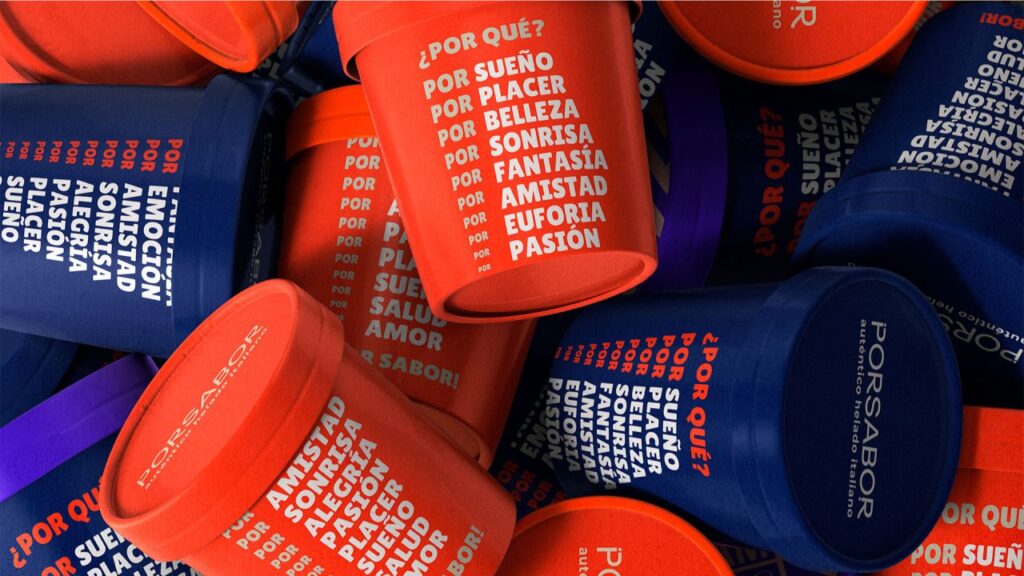

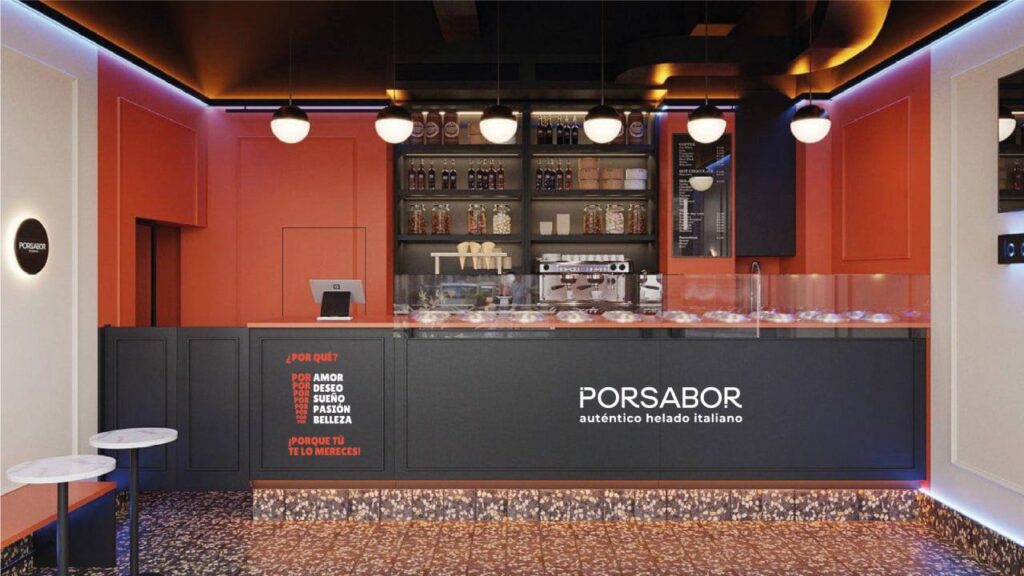
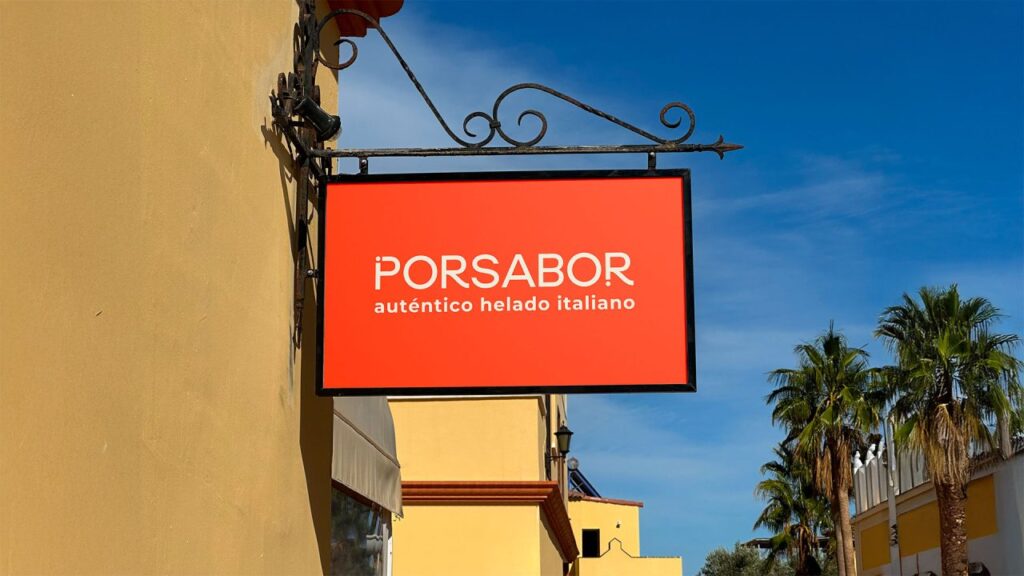
Moss Bar isn’t just a venue — it’s a visual manifesto. Its identity is built around the cultural codes of the ’90s, the image of Kate Moss, and the aesthetics of “heroin chic.” The concept is captured in the slogan “Your Chemical Romance,” and the elongated serif logo evokes the feeling of looking through a glass.
Monochrome, typography, composition — everything is designed to create a sense of immersion and subtle obsession, reminiscent of a Saint Laurent campaign. Here, every element isn’t just décor — it’s a mood.
And that’s the key to its success: the bar creates a community of people who see themselves in the brand’s image and vibe.

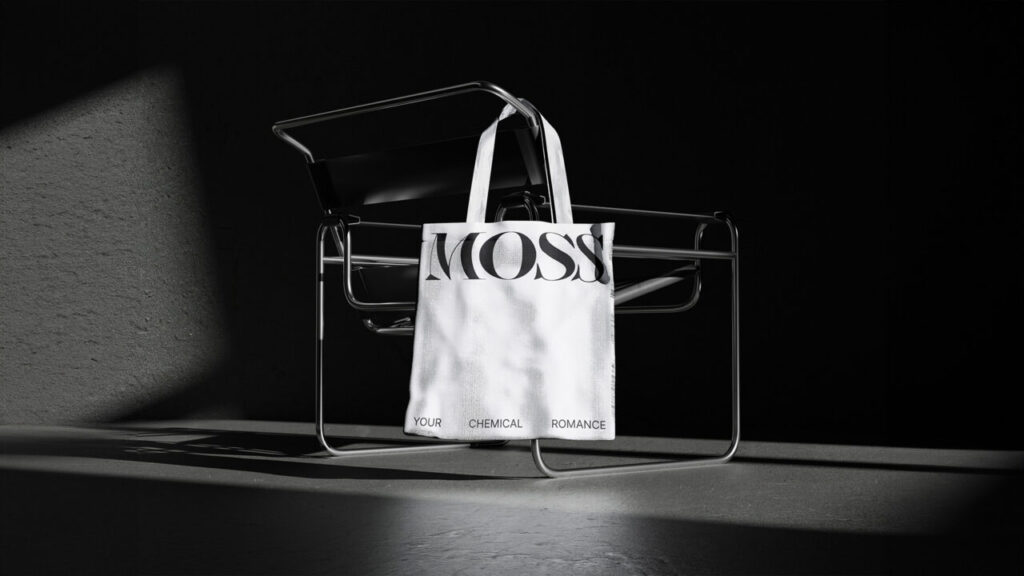
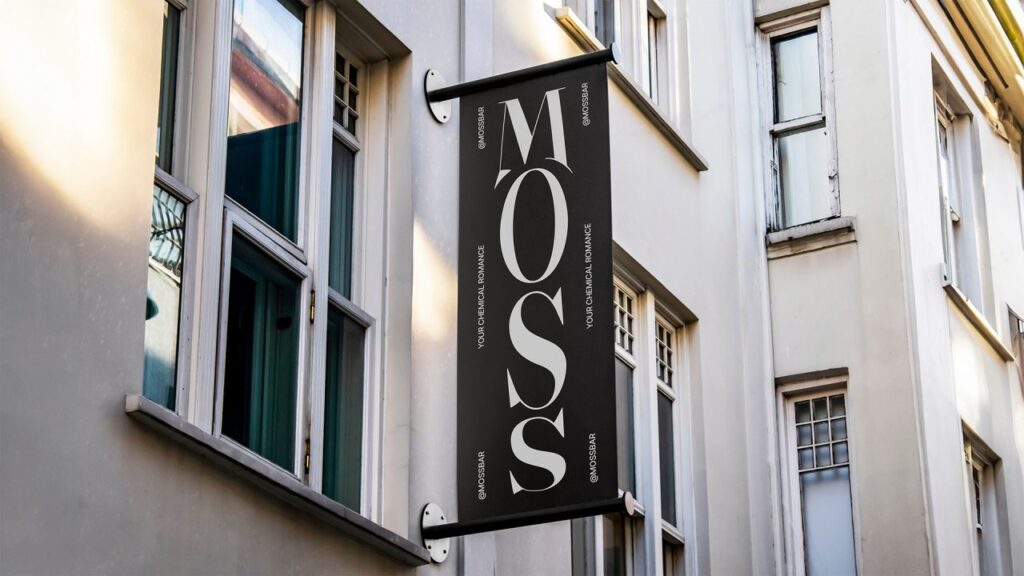
The final case — Louis Prima Bar. It’s an attempt to capture the spirit of New Orleans without relying on obvious visual clichés.
The logo is built from building silhouettes that morph into letters — a visual portal that opens the door to the city’s atmosphere. The color palette — shades of cognac and champagne — evokes the glow of the bar counter, the intimacy of jazz, and the copper shimmer of a saxophone.
Instead of decorative elements, the branding uses linocut and ornamental patterns as layers of cultural memory. The entire brand identity doesn’t aim to decorate — it aims to transport. From the signage to the sensations inside the space, the guest is quite literally immersed in another reality.
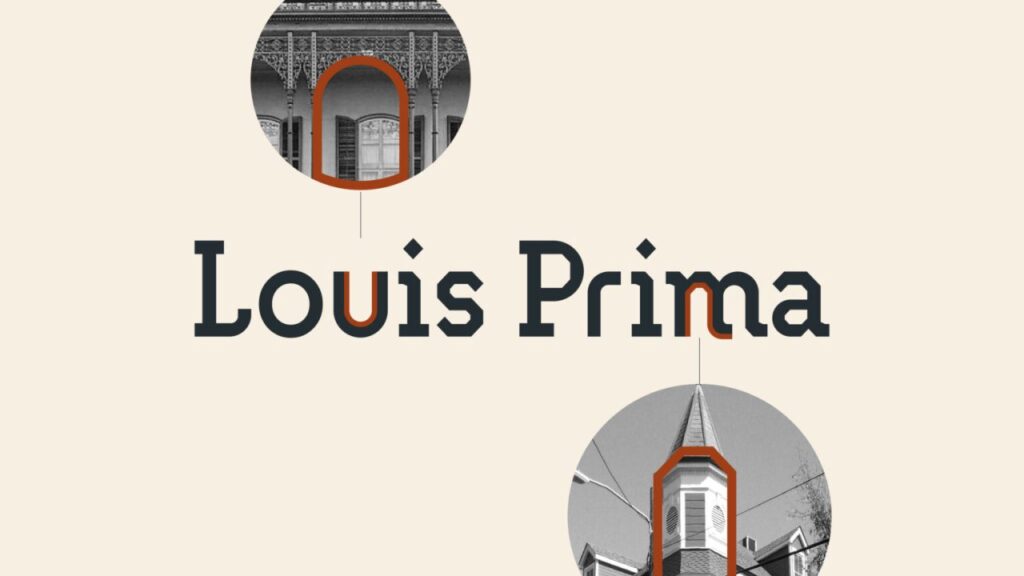
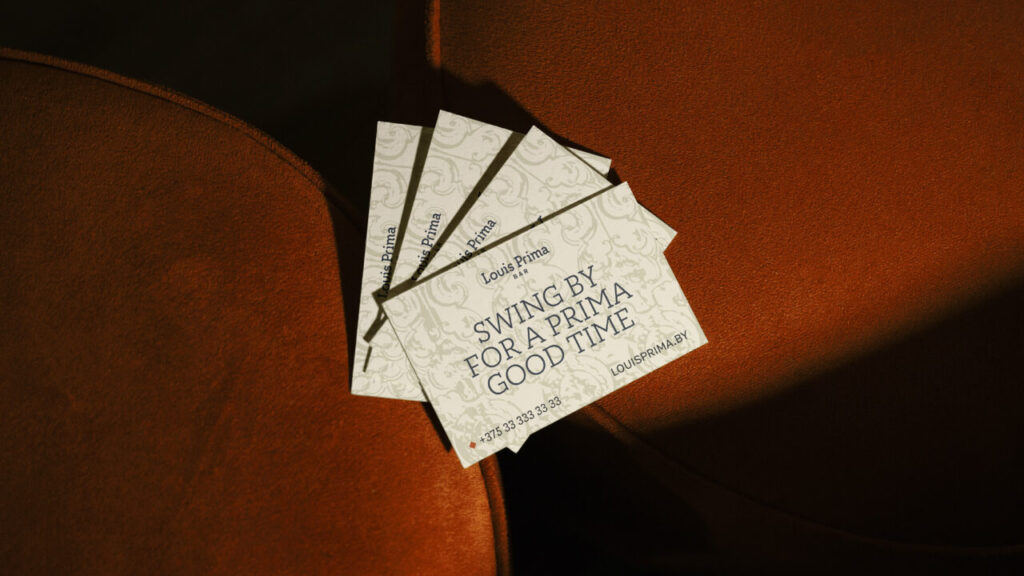
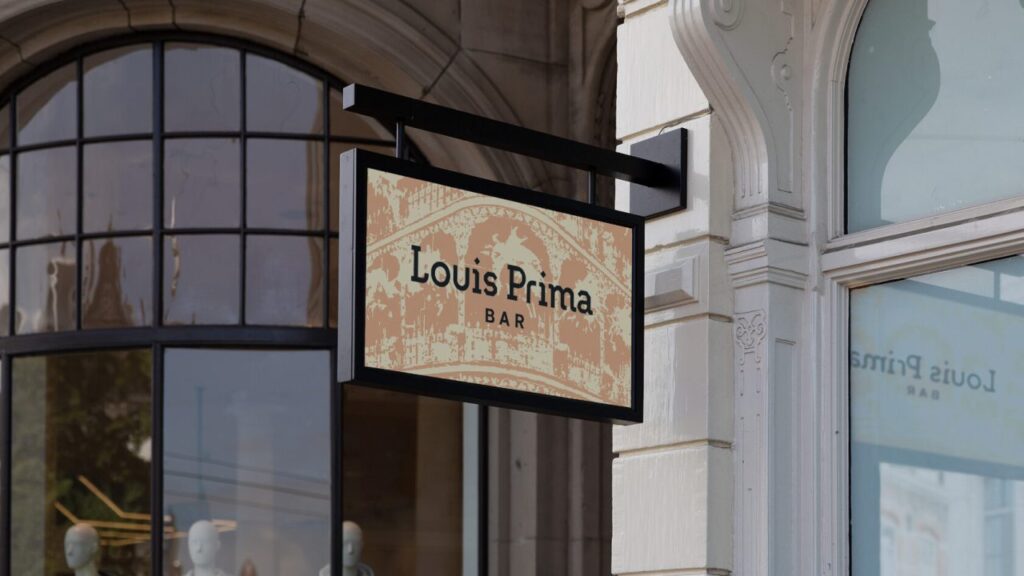
Each of these venues is a powerful example of how thoughtful branding can transform a point of sale into a story, an atmosphere, and a personal experience. It’s more than just about food. It’s about leaving a mark.
TOP 5 STRATEGIES
Below are five strategies that will shape the development of strong gastronomic brands in the coming years.
1. Authenticity through Hyper-Locality. More and more venues today aim to reflect local traditions, architecture, climate — even the microclimate — in their concepts. A striking example is the Michelin-starred restaurant Blue Hill at Stone Barns in the U.S., which grows most of its ingredients on its own farm. This approach emphasizes seasonality, builds trust, and communicates a sense of honesty.
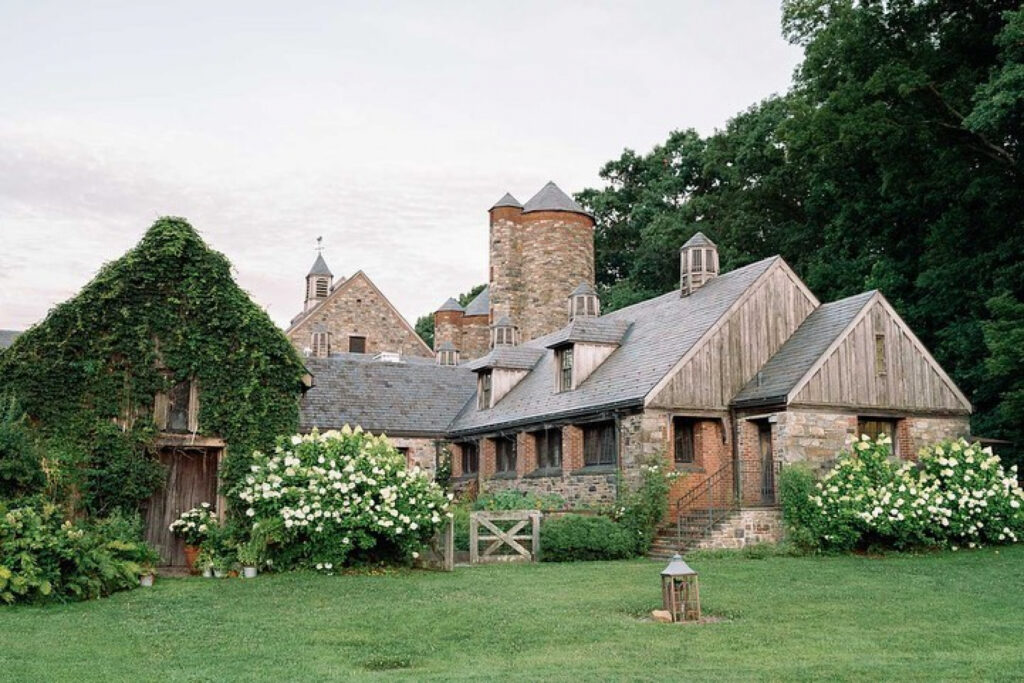
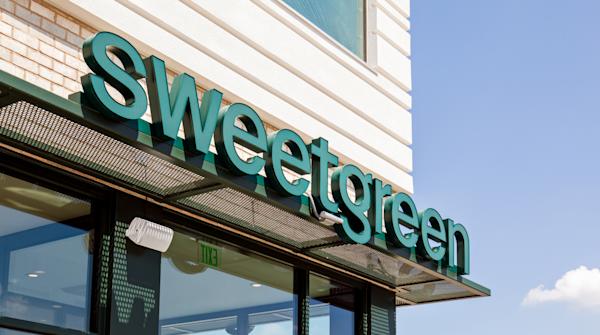
2. Personalization of the Customer Experience. Loyalty programs, custom dishes and drinks tailored to individual tastes and preferences — all of this turns the customer into a participant, not just a guest. For example, the café Sweetgreen allows customers to build their own mix from ingredients sourced from over 500 farms. This boosts loyalty and increases the average check — because the customer feels heard.
3. Digital Storytelling and Engagement. Today’s restaurant brand is becoming a media outlet: it tells stories — of chefs, suppliers, and guests — and actively engages in dialogue on social media. The American chain Chipotle does this through memes, trends, and internet culture, crafting the image of a simple and relatable brand.
According to Food & Wine forecasts, storytelling is set to become a key trend in the food industry by 2025.
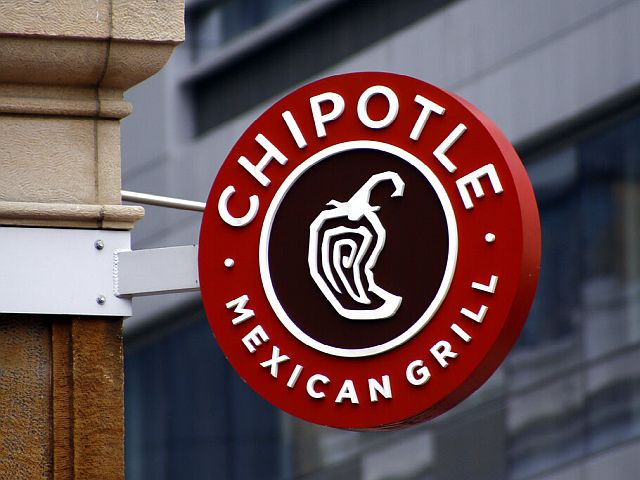
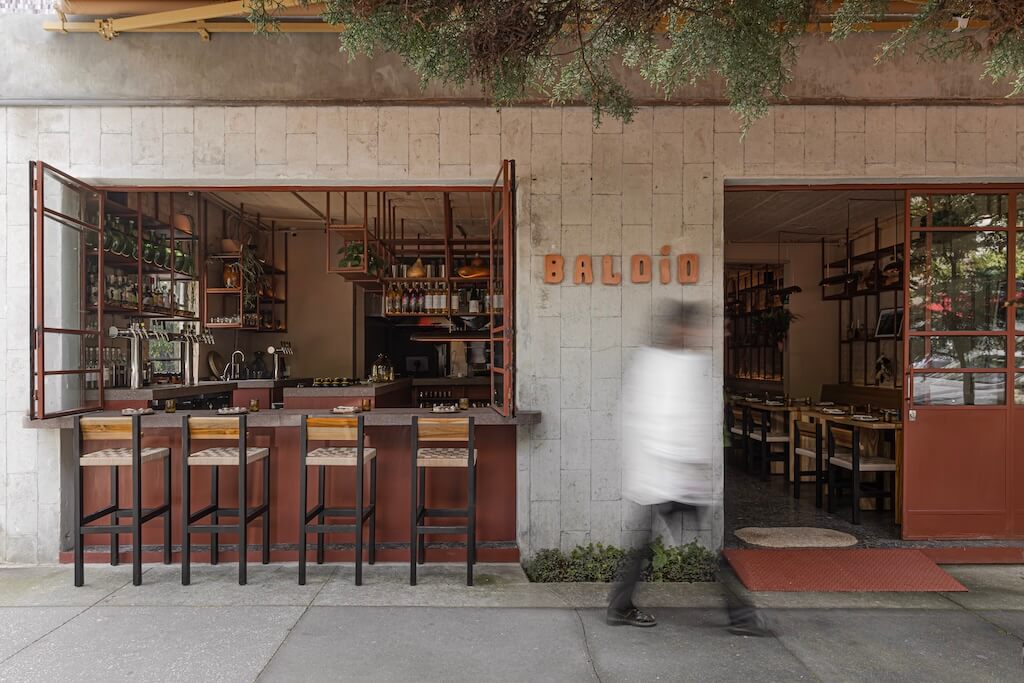
4. Sustainability and Zero-Waste. Leading restaurants are minimizing waste, repurposing ingredients, and using eco-friendly materials. For example, the Mexican restaurant Baldío has transformed into a “trash-free restaurant”: peels, pits, and leftovers are fermented and reused. This isn’t just a trendy image — it’s a real reduction in costs, strong media support, and even recognition: the restaurant was awarded a Michelin Green Star.
5. Immersive, Multi-Sensory Format. Food becomes part of a holistic experience that includes sound, light, scent, and emotion.
Osip 2.0 — a British restaurant-retreat offering overnight stays and farm tours — connects each dish to the surrounding landscape. It’s not just dinner; it’s a journey the guest lives through with all their senses.

All of this proves one thing: branding in the food industry isn’t decoration — it’s an asset. It works around the clock, even when the restaurant is closed. It turns guests into advocates, dishes into culture, and the venue into a story people want to share.


